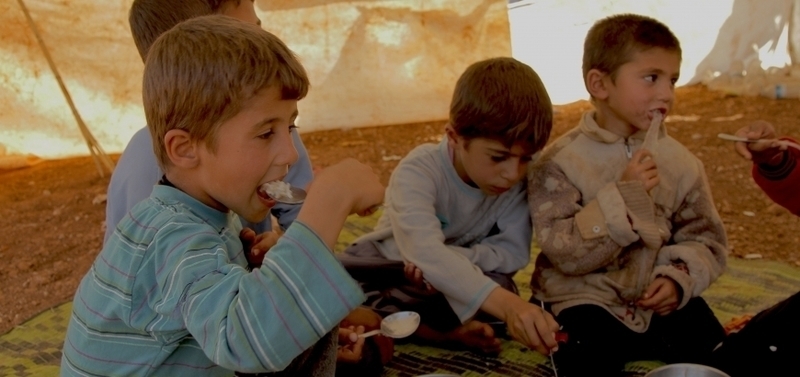According to a UN report released today, some “9.8 million people in Syria are food insecure, with 6.8 million of these ‘severely’ food insecure – a level of need that requires external food assistance”.
The report, prepared by the United Nations Food and Agriculture Organization (FAO) and the World Food Program (WFP) claims food production in Syria has improved this year thanks to increased rainfall, however, it is still below pre-crisis levels by wide margins, with the continuation of the ongoing conflict making more people victims to hunger and poverty.
The report pointed out that Syrian wheat production, though better than the poor harvest stricken by the drought of 2014, still fails to bring significant improvement to the situation of food security for most people.
More than half a million people were displaced from their homes since the beginning of this year, the report said, emphasizing that the ongoing conflict continues to undermine agricultural activities and food markets in Syria.
Although Syria’s current harvest is better than expected due to abundant rains, the country’s agriculture sector remains decimated by the conflict. Urgent donor support is needed to ensure farmers can meet the upcoming cereal planting season, beginning in October, said Dominique Burgeon, Director of FAO’s Emergency and Rehabilitation Division.
Wheat production in 2015, estimated at 2.445 million tons, is expected to be better than the very poor harvest of 2014 and slightly better than that of 2013, but remains 40 percent lower than pre-conflict production levels.
Syria faces a wheat deficit of about 800,000 tons out of its yearly needs of nearly 5 million tons.
Livestock production, once a contributor to exports, has seen drops of 30 percent in cattle, 40 percent in sheep and goats, and of 50 percent in poultry.
Translated and edited by The Syrian Observer


